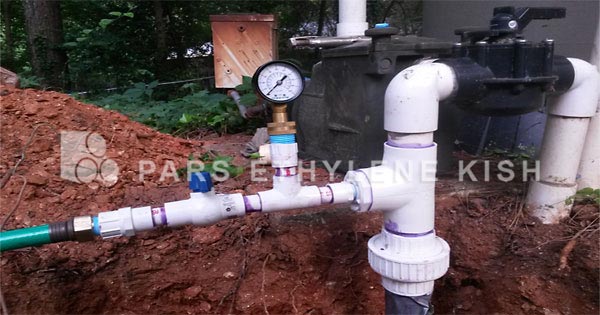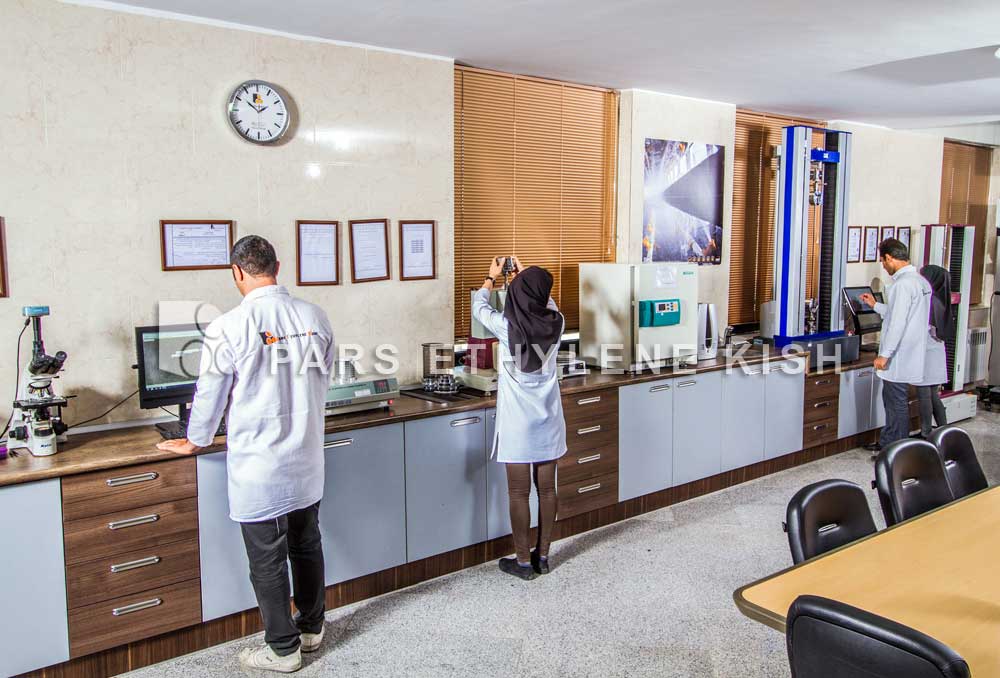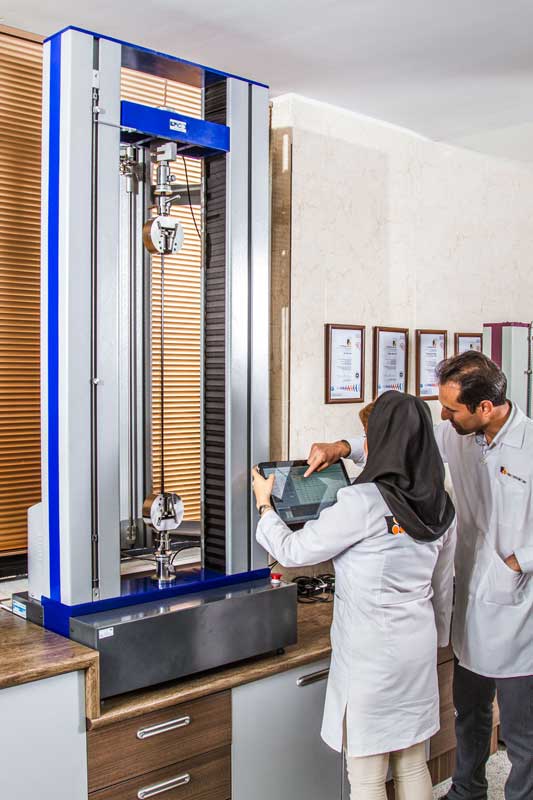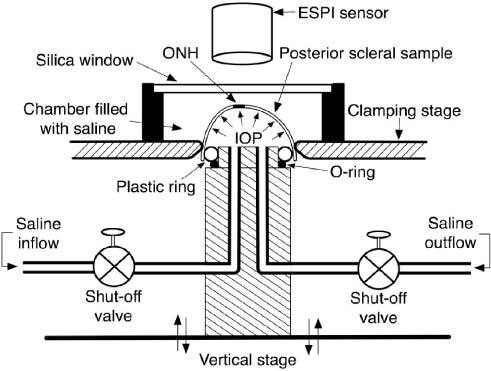
Plastic Pressurization Testing
Polymeric products are routinely used in pressure-containing applications in numerous technology areas such as gas and fluid transfer, automotive applications, and consumer and industrial products. These materials can be in the form of tubing, pipe, and vessels of small or large sizes. In order to assure short and long-term product performance, it is necessary to understand the stress-carrying capacity, and hence pressure-carrying capacity of the material. Note that for uniform cylindrical geometries such as pipe and tubing, the internal pressure is related to the wall stress by the ISO equation: Stress = Pressure x {(Average Outside Diameter – Minimum Wall Thickness) / (2 x Minimum Wall Thickness)}.
Polymeric products are evaluated to understand their short and long-term stresscarrying capacity by two test methods: “quick-burst” Plastic Pressurization Testing and sustained or time-to-failure testing. “Quick-burst” pressure testing of polymeric products is typically performed in accordance with ASTM D1599 Standard Test Method for Resistance to Short-Time Hydraulic Pressure of Plastic Pipe, Tubing, and Fittings as the overarching test methodology. Sustained or time-to-failure testing is typically performed in accordance with ASTM D1598 Standard Test Method for Time-to-Failure of Plastic Pipe Under Constant Internal Pressure as the overarching test methodology. Other pressurization testing modes for polymeric products include cyclic pressurization testing such as ASTM F1674 and UL1285 one million (1,000,000) cycle testing. Additionally, pressurization testing is sometimes performed with multiple simultaneous loading types such as added mechanical loads (e.g. ASTM F1588 Standard Test Method for Constant Tensile Load Joint Test), chemicals stressors (e.g. environmental stress cracking failure analysis investigations), and thermal stressors (e.g. elevated temperature testing of polyolefin pipe for creep rupture properties).

The polymeric materials used in pressure pipe applications are rated on a material stress basis by the Hydrostatic Stress Board of the Plastics Pipe Institute. Stress ratings of this type are termed Hydrostatic Design Basis (HDB). These HDB stress ratings are called out within material specification requirements and/or product specifications, and are ultimately related to the pressure rating of the final product (via the ISO equation).
Test data for HDB stress ratings are typically performed on small diameter pipe samples produced under laboratory-type conditions and tested using ASTM D1598. The data generated is then interpreted using ASTM D2837 Standard Test Method for Obtaining Hydrostatic Design Basis for Thermoplastic Pipe Materials or Pressure Design Basis for Thermoplastic Pipe Products. Materials that this testing and data analysis would be routinely performed on include polyethylene (PE), crosslinked polyethylene (PEX), polyvinylchloride (PVC), chlorinated polyvinylchloride (CPVC), polybutylene (PB), and polypropylene (PP). Additionally, ASTM D1598 and D2837 can be used to pressure rate composite pipe products (i.e. not on a material stress basis). These composite pipe products include fiberglass reinforced, metallic reinforced, and carbon-fiber reinforced polymeric piping products. Note that pressure ratings of this type are termed Pressure Design Basis (PDB) and are usually not transferable within different product sizes in an identical product line.
Plastic Pressurization Testing is also performed in accordance with ASTM D1598 and D1599 as further described below:
-
Hydrostatic quick-burst testing of PVC pipe in support of various ASTM product specifications such as D1785 and D2241, and AWWA C900 product specification requirements (These tests are routinely performed on pipe ranging from 1/2-inch to 12-inch nominal diameter.)
-
1000-hour hydrostatic sustained-pressure testing of PVC pipe in support of AWWA C900 product specification requirements (These tests are routinely performed on pipe ranging from 4-inch to 12-inch nominal diameter.)
-
80°C (176°F) 170-hour hydrostatic sustained-pressure testing in support of the AWWA C906 product specification requirements (These tests are routinely performed on pipe ranging from 1-inch to 24-inch nominal diameter.)
-
Proof testing of metallic tubing for use in air bag inflators to over 10,000
-
Hydrostatic testing of fiberglass pipe up to 12-inch nominal diameter in order to generate PDB pressure rating data
-
Hydrostatic testing of carbon-fiber reinforced tanks to over 15,000 psi in support of product development
-
Hydrostatic pressure testing of medical device bags, vessels, containers, products, etc. for resistance to both short-time (quick-burst) pressure and long-term pressure, using both pneumatic and hydrostatic techniques
-
Pressure testing of hoses for the transport of hot asphalt products (tar) at 450°F
-
External pressurization testing to simulate underwater exposure to 10,000 feet depth
-
Hydrostatic pressure testing to duplicate environmental stress cracking failures in CPVC piping-fire sprinkler systems in the laboratory, using chemical stressors
Microbac Laboratories - Hauser Division has capabilities to pressure test articles from vacuum to approximately 15,000 psi. These pressure testing capabilities include both pneumatic testing (typically from ambient to 500 psi maximum, depending upon volume), and hydrostatic pressure testing (typically from ambient to 3000 psi maximum, but semi-routinely to 15,000 psi). Pneumatic and hydrostatic pressure testing can be performed at temperatures as low as approximately -40°F to as high as approximately 450°F, and other temperatures can be accommodated.

